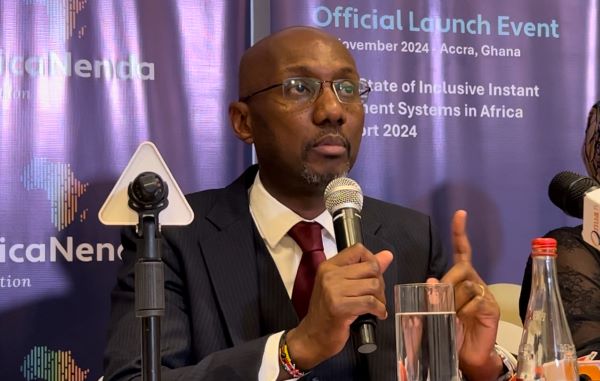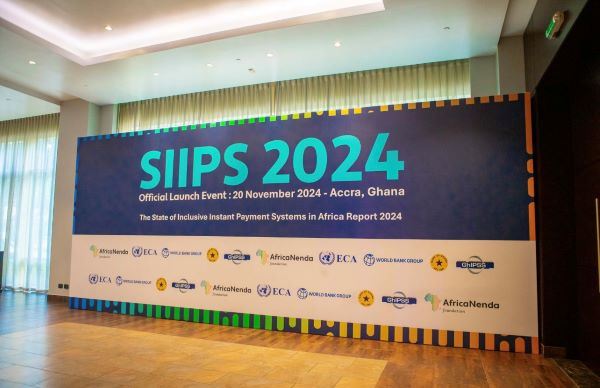
Thirty-one (31) payment systems in Africa recorded almost US$1 trillion in 49 billion instant payment transactions in the year 2023, according to the AfricaNenda Foundation’s current State of Inclusive Instant Payment Systems (SIIPS) in Africa Report.
The Report, launch in Accra in collaboration with the Bank of Ghana and the Ghana Interbank Payments and Settlements Systems, captures the current state of regional and country-based instant payment systems (IPSs) on the continent, their level of inclusivity, outstanding regulatory and consumer issues, and makes recommendations on how the entire continent will have access to instant payment services by 2030.
According to the report, the US$1 trillion value of transaction recorded for last year represents 273% growth between 2020 and 2023, and a 39% average annual growth over the last five years. Again, the 49 billion volume of transaction also represents 47% growth over that of 2022, which stood at 33.3 billion, and 37% average annual growth over the last five years.
Per the report, out of the 31 instant payment systems (IPSs) on the continent right now, 28 of them are domestic (country based), while three are regional, meaning they cut across a number of countries. Meanwhile, some 25 systems are also either being newly developed or upgraded in some countries, while there are four (4) regional systems either being developed or upgraded.
But the crux of the matter is the level of inclusivity of each of 31 IPSs – in terms of how affordable, accessible and safe they are for consumers of all social statuses and income levels.
There are three levels of inclusivity rankings – basic, progressed and mature.
According to the report, 10 of the 31 IPSs, including even the supposed continent-wide PAPSS (pan-Africa Payments and Settlements System) could not be ranked because there is no data to do so. Meanwhile, 12 are at the basic level, out of which six are working towards the progressed level, and only nine (9) are at the progressed level. None of the payment systems in Africa have reached maturity level yet.
Basic level of inclusivity means the system works but is not interoperable with other platforms to allow cross-network payments and or does only P2P payments not to P2B, B2P, G2P and P2G payments. The progressed level on the other hand, means there is interoperability of systems, where instant payment can happen across various digital wallets, between wallets and banks accounts and also via various channels, including QR codes.
To reach mature level, it takes a very high level of consumer protection and measures to prevent abuse of consumer data, plus a strong consumer recourse mechanism that addresses consumer complaints in a transparent and efficient manner; and this must be at the infrastructure, service provider and regulatory levels.
In the words of the Deputy CEO of AfricanNenda Foundation, “We want to you to go digital, we have make sure the system is safe and affordable for you to go digital.”
Bridging the Inclusivity gap

CEO of AfricaNenda Foundation, Robert Ochola said ensuring consumer confident in IPSs is critical because that is what will help to bridge the 40% inclusivity gap on the continent.
According to him, in spite of the progress made so far, there is still over 400 million Africans who do not have access to instant payment services, out of which 60% a are women.
He said, per consumer research AfricaNenda carried out in some countries, there three critical issues of concern to consumers, which constitute barriers to inclusivity – they are costs of accessing the service, fraud, and data privacy.
Robert Ochola therefore urged regulators and service providers on the continent to put systems to in place to ensure affordability, data privacy and minimal fraud so that Africa can reach the universal access to instant payment by 2030.
Regulatory Harmonization
Speaking of regulatory intervention, a critical issue of concern that emerged at the launch was the need fore regulatory harmonization to drive cross-border payments.
Even within countries, various regulations which need to be harmonized to ensure smooth cross-border payments, are under the purview of different regulators. Finance is under central banks, data protection and even identification systems are also under separate regulators.
The harmonization of all these regulation in country and then across the continent will form the basis for then ensuring that even different currencies on the continent can be converted without being pegged to the dollar or any foreign currency outside of Africa.
Robert Ochola noted that there is some progress in that area, particularly in the Central African Economic and Monetary Community (CEMAC), Southern African Development Community (SADC) region there is regional payment system that allow easy payments across the six member countries.
It is expected that the rest of the continent with adopt some learnings from the pockets of success stories and work towards effective regulatory harmonization to drive smooth cross-border payments across the continent.










